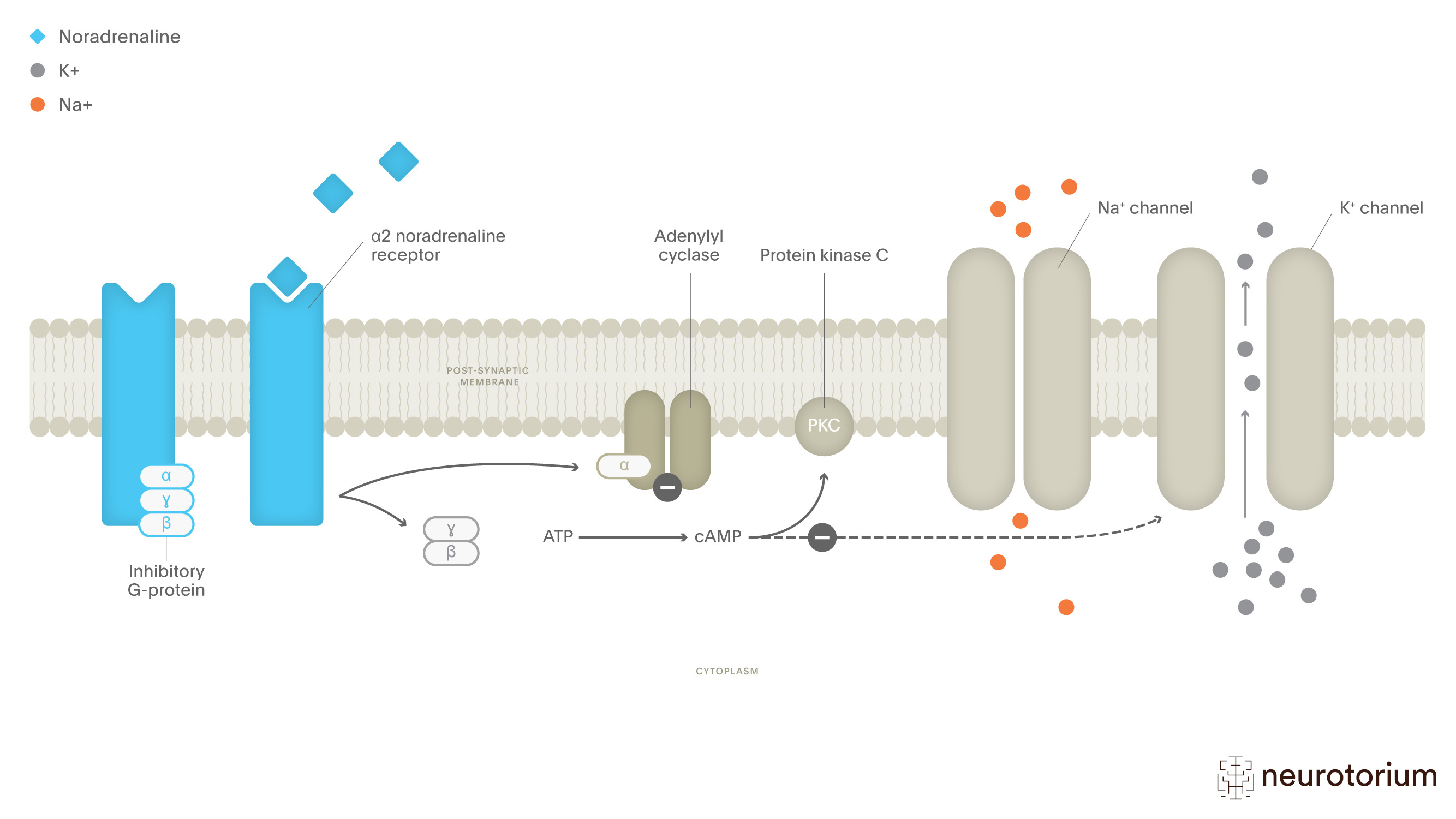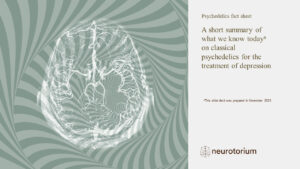Noradrenaline binding to α2 noradrenaline receptor inhibits noradrenaline release. The α2 noradrenaline receptor is coupled to inhibitory G-proteins. Following agonist binding, the G-protein dissociates from the receptor and inhibits adenylyl cyclase. This causes the inactivation of adenylyl cyclase, resulting in a decrease of cyclic adenosine monophosphate (cAMP) produced from ATP. As cAMP is inhibited, potassium efflux through calcium-activated channels prevents calcium ions from entering the nerve terminal, leading to hyperpolarization and a suppression of neural firing and neurotransmitter release.1





